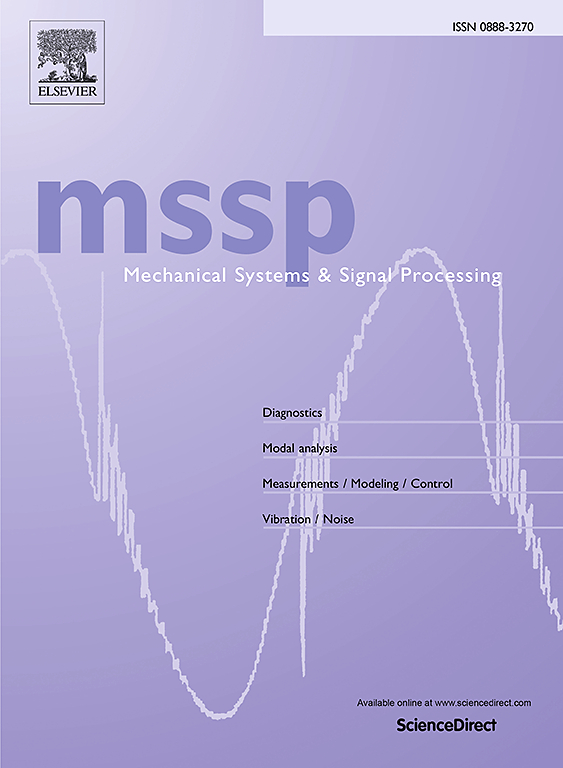基于有限元法和变压器的压电陶瓷监测系统材料衰减提取
IF 8.9
1区 工程技术
Q1 ENGINEERING, MECHANICAL
引用次数: 0
摘要
压电(PZT)监测系统在结构健康监测中具有灵敏和高效的特点。然而,PZT监测系统收集到的衰减信息往往包含与材料特性无关的成分,称为与材料无关的衰减。这方面的例子包括波扩散注意、力电转换损耗等等。这些与材料无关的衰减会掩盖信号中有价值的信息,阻碍结构损伤的识别。本研究提出了一种提取依赖于材料内部特性的衰减分量的新方法,称为材料相关衰减。对PZT监测系统的工作模式进行了初步分析,推导出了总衰减方程。随后,引入了一种替代模型来预测与材料无关的衰减,该模型将卷积神经网络(CNN)与Transformer集成在一起。CNN被构建为一个多残差通道模块来提高特征分辨率,而Transformer则用于对这些特征的位置属性进行编码和过滤。通过数值模拟生成该模型的训练数据。最后,根据总衰减方程,将与材料无关的衰减从总衰减中剔除,得到与材料有关的衰减。数值模拟试验表明,该方法能准确提取PZT监测系统中与材料相关的衰减。此外,还设计了现场试验,将该方法应用于混凝土动渗透系数的反演。反演结果表明,该方法能准确提取物质相关衰减,具有较强的实用性和通用性。本文章由计算机程序翻译,如有差异,请以英文原文为准。
Extracting material-dependent attenuation from the PZT monitoring system based on FEM and transformer
Piezoelectric (PZT) monitoring systems have been demonstrated to be both sensitive and efficient for structural health monitoring. However, the attenuation information collected by the PZT monitoring system often contains components that are unrelated to material properties, referred to as material-independent attenuation. Examples of this include wave diffusion attention, force-electric conversion loss, and so on. These material-independent attenuations can obscure valuable information within the signal and hinder the discrimination of structural damage. This study proposed a novel approach for extracting the attenuation components that are dependent on material internal properties, termed material-dependent attenuation. The operating mode of the PZT monitoring system was initially analyzed, leading to the derivation of the total attenuation equation. Subsequently, a surrogate model for predicting material-independent attenuation was introduced, which integrates the convolutional neural network (CNN) with the Transformer. The CNN was structured as a multi-residual channel module to improve feature resolution, while the Transformer served to encode and filter the positional attributes of these features. The training data for this model was generated through numerical simulations. Finally, based on the total attenuation equation, the material-independent attenuation was eliminated from the total attenuation to obtain the material-dependent attenuation. Numerical simulation tests demonstrated that the proposed approach can accurately extract the material-dependent attenuation from the PZT monitoring system. Additionally, a field experiment was also designed to apply the proposed approach to invert the concrete dynamic permeability coefficient. The inversion results indicated that the proposed approach can accurately extract the material-dependent attenuation with considerable practicality and generalization.
求助全文
通过发布文献求助,成功后即可免费获取论文全文。
去求助
来源期刊

Mechanical Systems and Signal Processing
工程技术-工程:机械
CiteScore
14.80
自引率
13.10%
发文量
1183
审稿时长
5.4 months
期刊介绍:
Journal Name: Mechanical Systems and Signal Processing (MSSP)
Interdisciplinary Focus:
Mechanical, Aerospace, and Civil Engineering
Purpose:Reporting scientific advancements of the highest quality
Arising from new techniques in sensing, instrumentation, signal processing, modelling, and control of dynamic systems
 求助内容:
求助内容: 应助结果提醒方式:
应助结果提醒方式:


